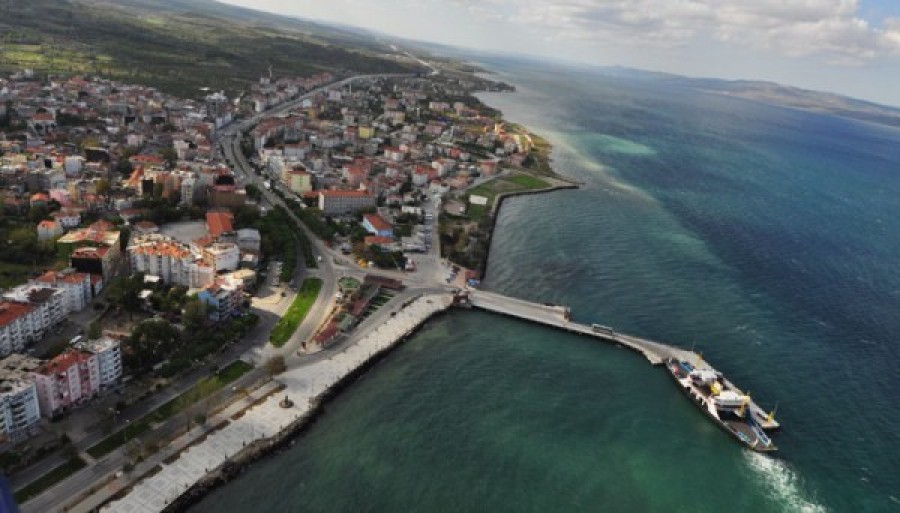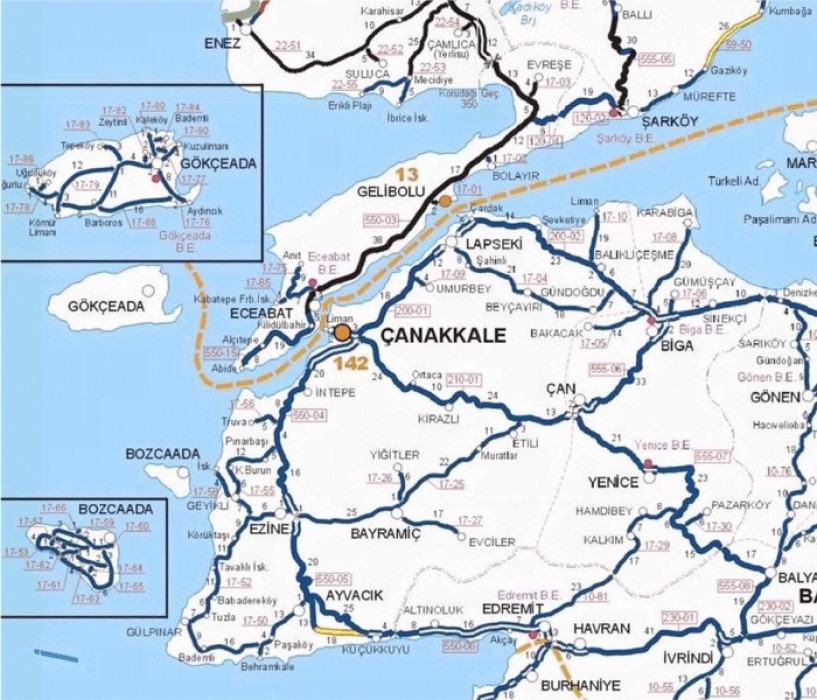Lapseki, its history dates back to around 600 BC. It is believed that the ancient town of Pityausa was established by the people of Phocaea in ancient times. There are two legends regarding the origin of the name of the district. According to the first legend, Phocaean immigrants, who were attacked by the local people called Bebrycos in this region, were about to be killed when King Mandrom's daughter Lampseke intervened and saved the immigrants. As a result, the Helenic immigrants worshipped Lampseke like a goddess and, later on, they expressed their gratitude by naming the city they took over Pityausa after her.
The second legend is found in the travelogue of Evliya Çelebi. According to Evliya Çelebi, there was a hill and a fig forest on it, far from the seaside. Turks used to call figs "Löp." So, this city, which was built here, was called Lapseki, meaning "fig hill," and its name comes from "Löpseki."
Lapseki is famous for its cherries, and that's why the Lapseki Cherry Festival is held every year. It is located in the Southern Marmara region of the Marmara province. It is surrounded by the Biga District to the east, the Dardanelles Strait to the north, the central district of Çanakkale to the west, and the Çan District to the south. Across the strait, you can find the Gelibolu District. Additionally, ferries departing from the town center provide transportation to the Gelibolu District. The total area of Lapseki is 955 km².

Lapseki is located at the intersection of 40 degrees 20 minutes north latitude and 26 degrees 42 minutes east longitude. It falls within the climatic region of Marmara. The climate in Lapseki is characterized by hot and dry summers, while the winter months are mild and rainy. The region is generally mountainous and rugged, with the mountains running parallel to the Çanakkale Strait. Therefore, coastal areas feature vineyards, Umurbey, and delta plains. Inland areas, on the other hand, consist of hilly terrain cut by river valleys with relatively low elevations. The elevation of the district is 3 meters above sea level.

Our district, especially in fruit cultivation, has significant potential. In Çanakkale, 70% of cherries, 73% of peaches and nectarines, and 61% of plums are grown in Lapseki. Cherries, nectarines, and peaches are among the cultivated products that are exported. The majority of cherries exported from Lapseki are sent to European countries such as England, Germany, the Netherlands, and others. Peaches and nectarines exported from Lapseki are mainly sent to Russia, Ukraine, Moldova, and Arab countries.
In the field of vegetable farming, our district also has a high production potential. In addition to seasonal products like tomatoes, peppers, beans, cantaloupes, and watermelons, Lapseki also produces winter crops like cauliflower, broccoli, leeks, lettuce, and spinach. Particularly, open-field cultivation of Stake Tomatoes in our district has been increasing every year, and the yield per acre for stake tomatoes is above the Turkish average.
Currently, there are 54 acres of plastic greenhouses in Lapseki. Greenhouse cultivation mainly focuses on cucumbers, beans, and lettuce.
Lapseki ilçemizde şu anda 54 dekar plastik örtülü Sera mevcuttur. Seralarda genellikle Hıyar, Fasulye ve Marul yetiştiriciliği yapılmaktadır.